Codiaeum variegatum
Tropical garden croton, Codiaeum variegatum, makes a spectacular houseplant.
A member of the genus Codiaeum in the Euphorbiaceae, or spurge, family, it is not to be confused with the “true croton” species of the genus Croton, also in the spurge family.
If you’ve vacationed where it’s warm and humid, you’ve probably been awed by this brightly-colored shrub.
There are many cultivars with glossy, leather-like leaves in various shapes. Colors range from yellow and green to red and almost black, with patches, speckles, or veins of contrasting colors.

We link to vendors to help you find relevant products. If you buy from one of our links, we may earn a commission.
Flowering is infrequent, and consists of pendant-style clusters of tiny yellow blossoms that pale in comparison to a breathtaking backdrop of richly-hued foliage.
Also known as rushfoil, Joseph’s coat, and variegated laurel, this slow-growing evergreen perennial is native to Australia and Southeast Asia.
Those living in USDA Hardiness Zones 10 to 12 may cultivate it outdoors year-round, and the rest of us can enjoy it as an annual, or indoors as a houseplant.
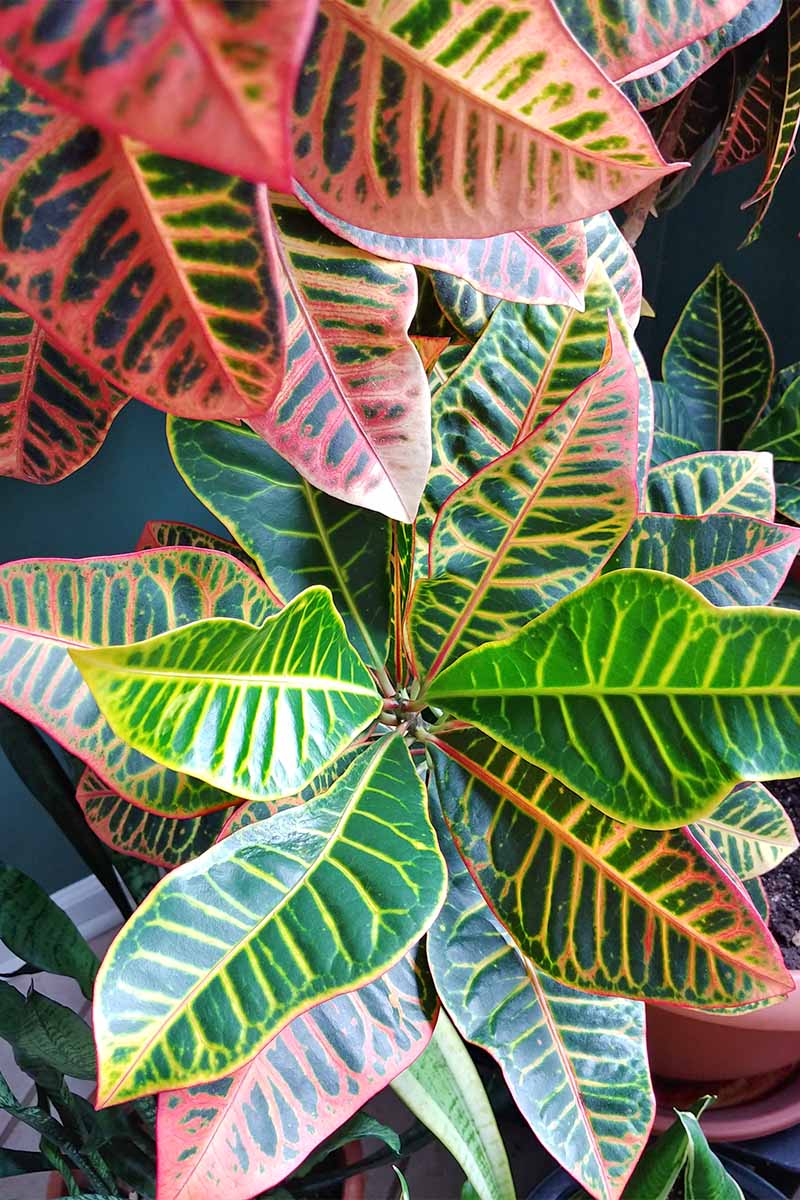
Ready to grow your own? We’ll teach you how! Here’s what’s ahead in this article:
How to Grow Croton
Let’s get started.
The Care and Feeding of C. variegatum
Choose a sunny placement with a south, west, or southwest exposure that is draft-free, and always above 60 degrees.
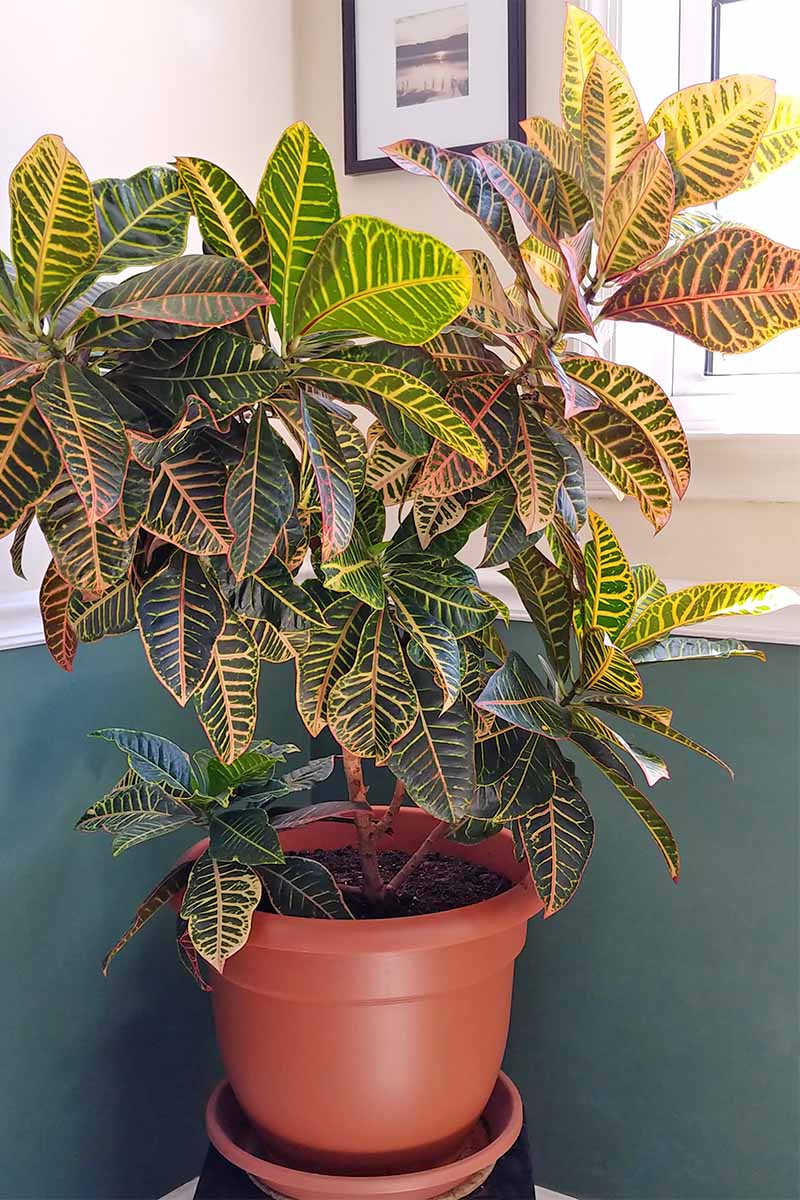
If you lack adequate daylight, you may try a grow light, like the Dual Head LED Clamp Grow Light, available from Wayfair. Plants that don’t get enough sunlight are likely to be less colorful.
Newhouse Lighting Dual Head LED Clamp Grow Light
Your new croton is likely to come in a grower’s pot. If you want to upgrade to a sturdier, more decorative container, choose one with a drainage hole and a drip tray.
Place a layer of pea gravel in the bottom of the pot, and fill with a good quality potting soil, such as Miracle-Gro Indoor Potting Mix, available from Amazon.

Miracle-Gro Indoor Potting Mix, 6 Quart (2 Pack)
You may add a liquid houseplant food like Miracle-Gro Indoor Liquid Plant food, available from Amazon. This is the product of choice in my family. To use, dilute it to half-strength and apply it once a month during the active spring through summer growth period.

When the surface of the soil becomes dry to the touch, it’s time to water at soil level and mist the leaves. You may leave a little water in the drip tray to add to the moisture in the environment.
Garden Croton Houseplant Facts
- Approximately 3 feet tall at maturity
- Showy, variegated foliage
- Sun-loving
- Moist, well-drained potting soil
- Slow-release fertilizer
- Temperate setting
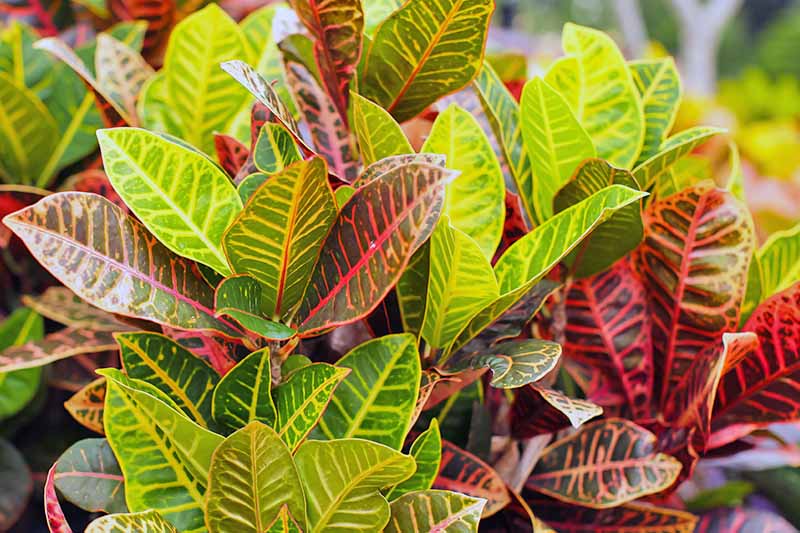
Please note that this ornamental plant is toxic if ingested, and its sap may cause skin irritation.
On Repotting, Pests, and Propagation
Crotons grow slowly. Over time, you may notice that you are watering more frequently, or that your plant isn’t as perky as it used to be. If so, may be time to repot.
To be certain, examine the drainage holes. If you see roots poking through, it’s time. Spring is the best time for repotting, as your plant is feeling especially vigorous.
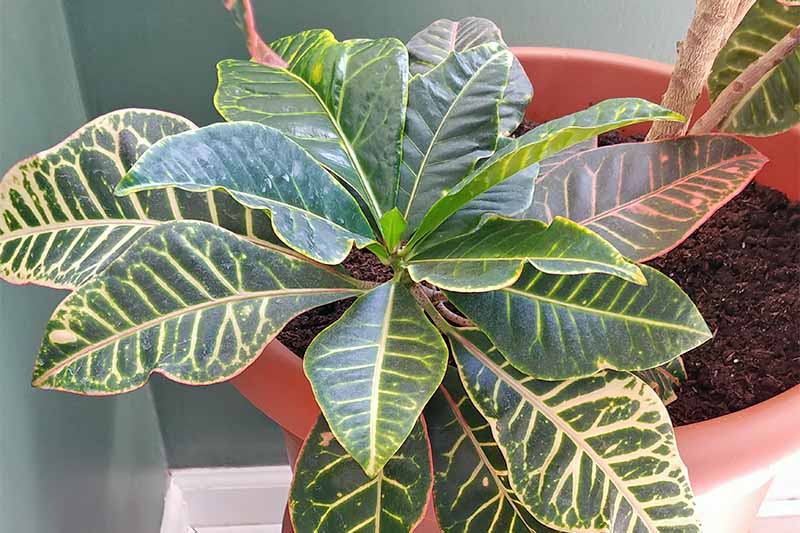
This is where some folks err on the side of generosity, myself included. When you repot a houseplant, choose the next size up, or in other words, a pot that is only an inch or two wider in diameter than the current container.
A pot that is too deep will encourage excessive root growth, rather than lush foliage.

To repot, first take note of how deep your plant sits in its old pot. You’ll want to replicate this depth in the new one. Gently ease your plant out of its old pot, dirt and all. Remove most of the old potting mix and tease the roots apart.
Your new pot should be clean and have a drainage hole. Cover the bottom with pea gravel and pour in new potting medium to a depth of about one-third the total depth of the pot.

Center your plant in the new pot, at the same depth it was in the old pot. Holding the plant with one hand, use your other to fill in around it with potting medium. Don’t fill to the top, but rather, leave a little space to prevent watering spillover.
Tamp down gently, water, and tamp again. Your freshly repotted plant may droop or drop leaves until it regains its composure. Give it time to acclimate, and resist the urge to fertilize for at least a few weeks.
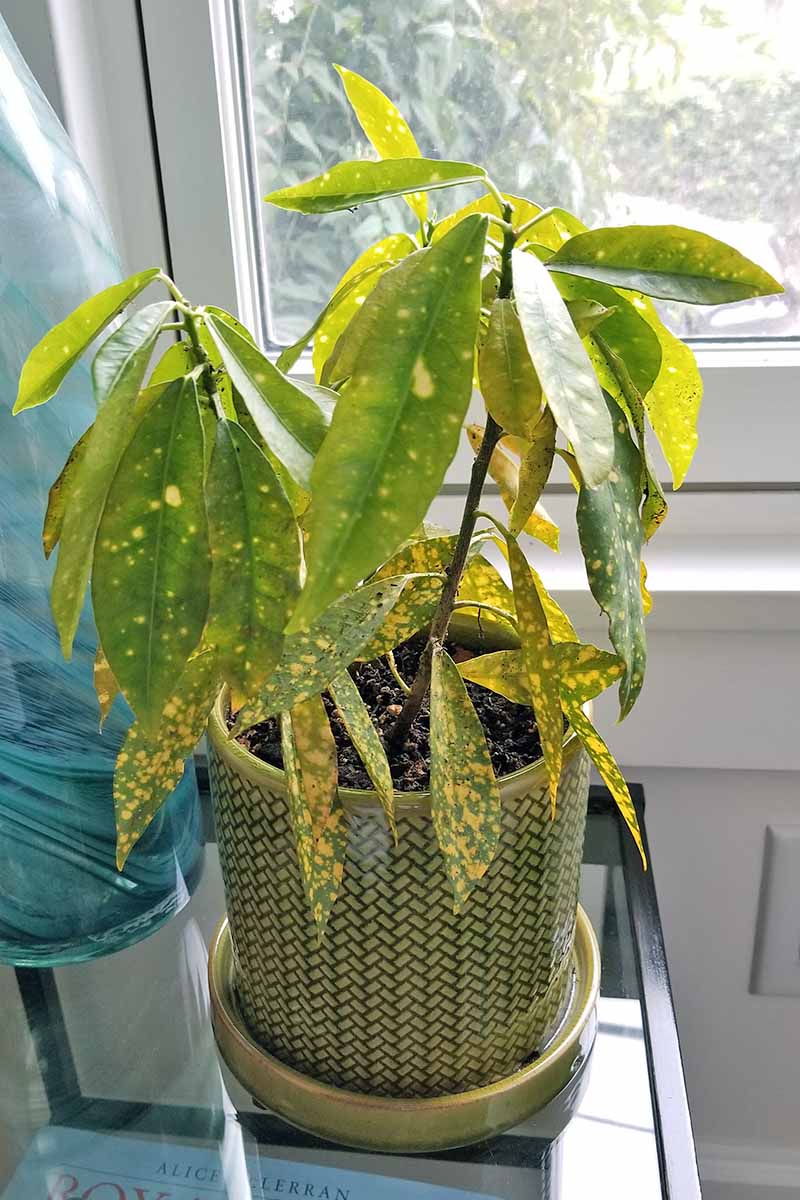
To prevent transplant shock, you can also water with tepid rather than cool or cold water.
A healthy croton is not prone to disease or insects. However, a plant weakened by too much or too little water, or one that is shocked by a change in environment, may be vulnerable to aphids, mealybugs, scale, or spider mites.
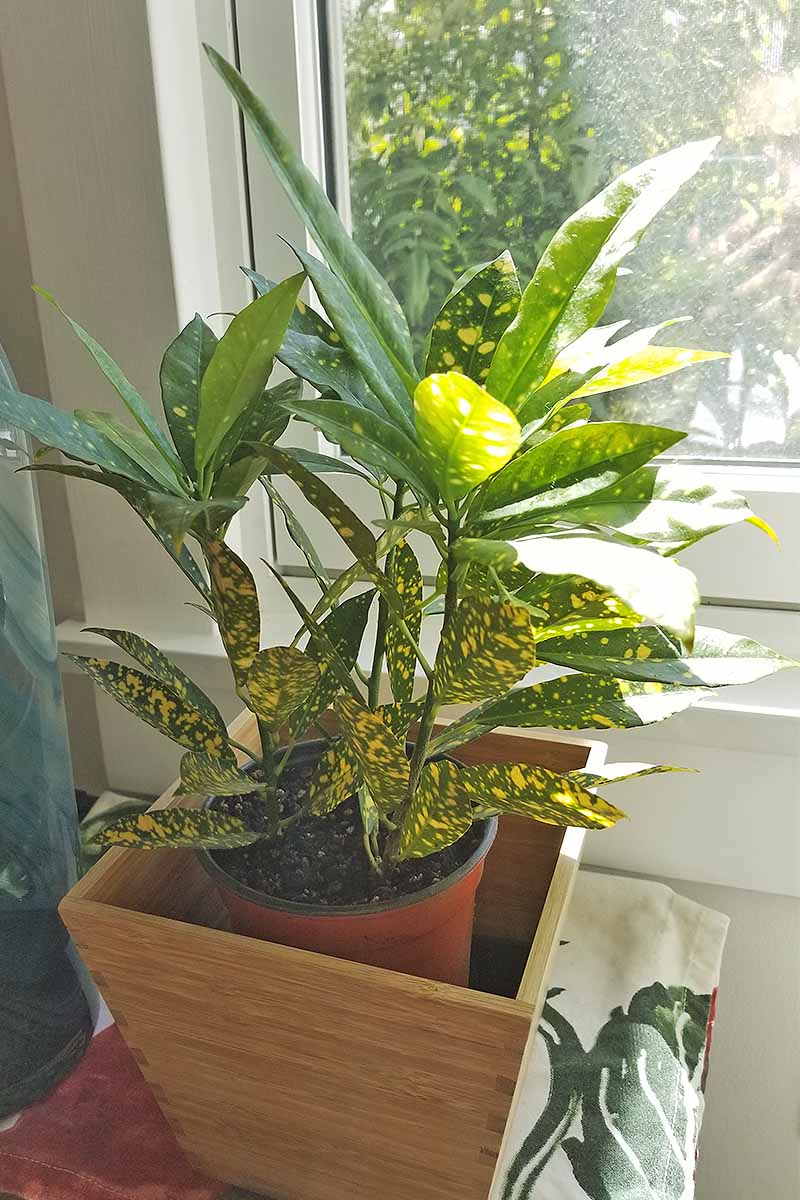
Periodically wipe your plant’s leaves down with a soft, damp cloth. You’ll not only keep them glossy, but if there’s trouble brewing, you’ll see it right away.
And if you do notice pests, try spraying them away with neem oil, available on Amazon.

Garden Safe Neem Oil Extract Concentrate
Friends are sure to admire your new favorite houseplant, so why not try your hand at propagation so you can give them one of their very own?
It’s easy! Here’s what you need to do:
- Wear gloves to prevent contact with stem sap, and select a branch with new growth.
- Use shears, like our favorite Felco F-2 pruners, to make a clean cut cross the branch about six inches below the tip.
- Remove the lowest leaves, if necessary, to reveal at least an inch of stem.
- Place your cutting in water or rooting medium until roots form. This may take several weeks.
- When roots have developed, pot as described above, and your new plant (or plants) will be ready to go!

If you’re ready to get started with your first plant and you don’t have a friend or acquaintance with clippable cuttings at the ready, these can be purchased in garden centers or online as well. Let’s take a look…
Where to Buy
There are so many different cultivars to choose from, it’s going to be tough to pick just one!
C. variegatum ‘Petra’ is available from Fast Growing Trees in a six-inch or a three-gallon pot. Elliptical green leaves are lavishly veined in yellow and red.

C. variegatum ‘Mammey’ in 6-inch Pot
C. variegatum ‘Mammey’ is available from Amazon in a 6-inch pot. Multi-colored, twisting, elongated leaves are accented with red and yellow.

C. variegatum ‘Banana’ in 3-inch Pot
C. variegatum ‘Banana’ is available from Amazon in a 3-inch pot. Elongated, twisting leaves are speckled and veined with yellow.

Costa Farms Croton Grower’s Choice Assortment, 4-Pack
And for those who can’t pick just one, 4 assorted C. variegatum are also available from Amazon, in 3.8-inch pots.
A Croton to Love
I know you’re going to love having a garden croton in the house. Let me tell you about the one that lives at ours.
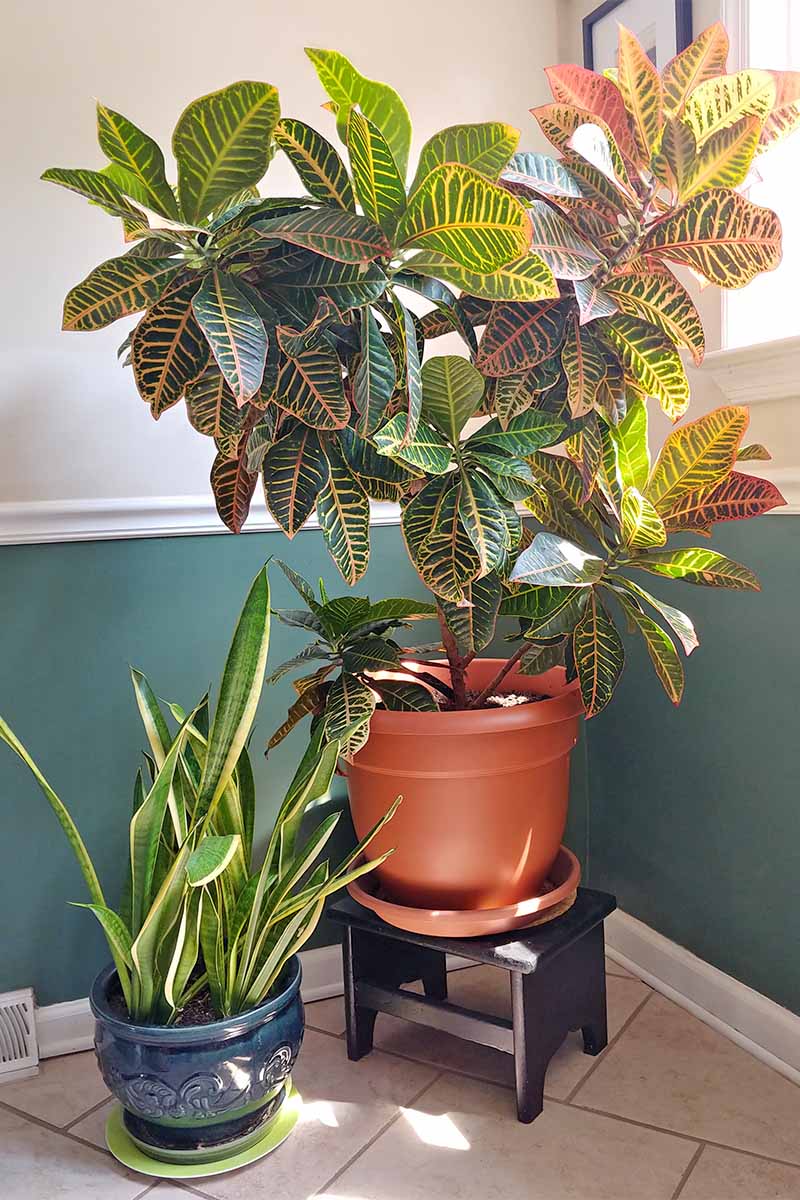
When my daughter arrived at college, the freshmen were given a tiny plant for their dorm room windowsills. She received a C. variegatum ‘Petra.’ Most of the students’ plants didn’t live to see Christmas, but my daughter’s not only survived, it thrived, and she named it “Jules.”
Jules came home in May and went back to school in August for four years, and never dropped her leaves. This girl was a champ!
After graduation, Jules came to live in my daughter’s empty bedroom, the sunniest room in the house. All was well until the day I went in and found her down to one leaf. Did I forget to water, or was she unhappy with her new surroundings?
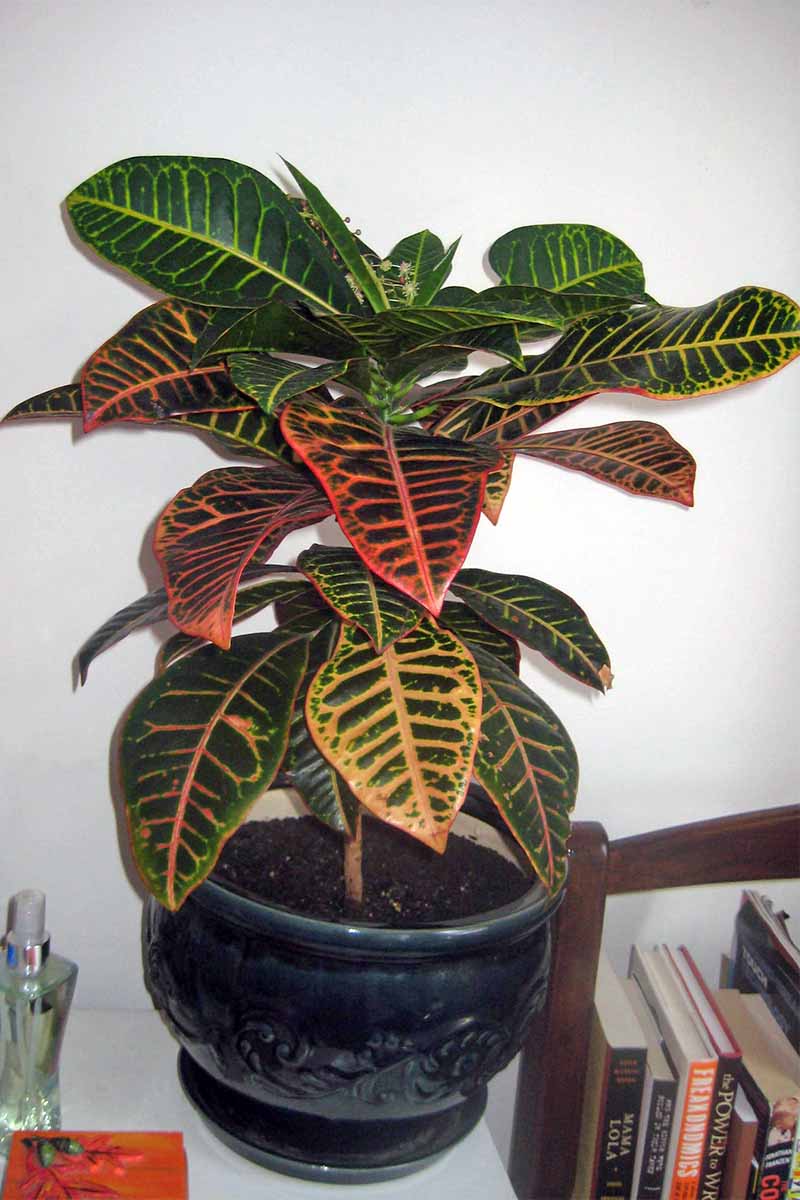
Either way, I am happy to report that crotons are quite resilient, and with a little TLC from my dad’s very green thumb, Jules made a full recovery. Now, at the ripe old age of 14, she occupies her own corner of the dining room.
If you’ve never grown a big houseplant, now’s the time to make room for garden croton. It’s sure to become part of the family!
Feel free to share your comments, questions, and advice in the comments section below.
And for more houseplant care tips, be sure to check these guides out:
- Houseplant Propagation for Beginners
- 21 of the Best Houseplants for Bright Light
- Houseplant Primer: A Guide to Basic Care and Durable Plants
Photos by Nan Schiller and Allison Sidhu © Ask the Experts, LLC. ALL RIGHTS RESERVED. See our TOS for more details. Product photos via Fast Growing Trees, Newhouse Lighting, Miracle-Gro, Garden Safe, and Costa Farms.
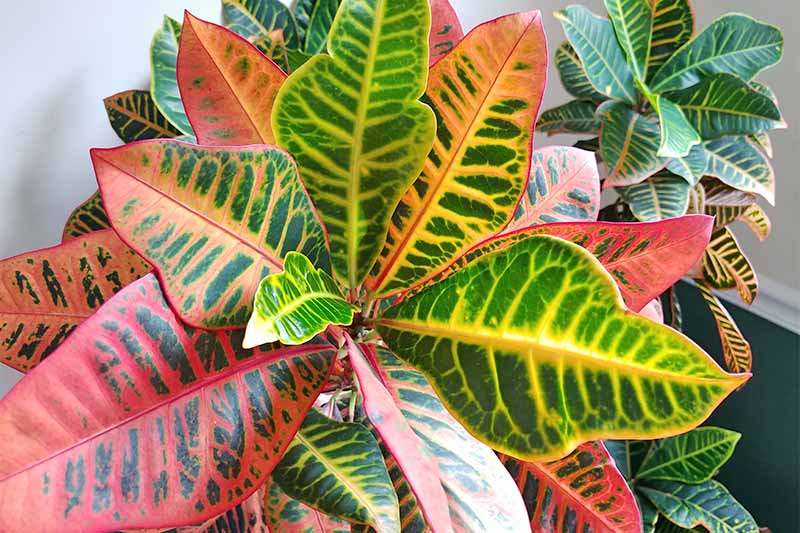
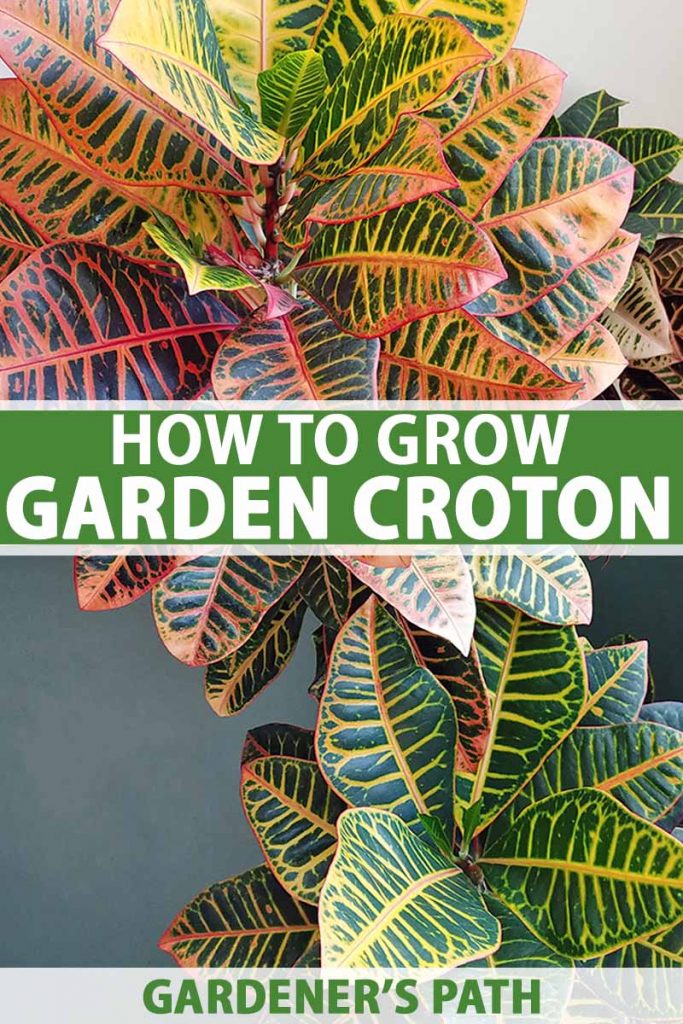

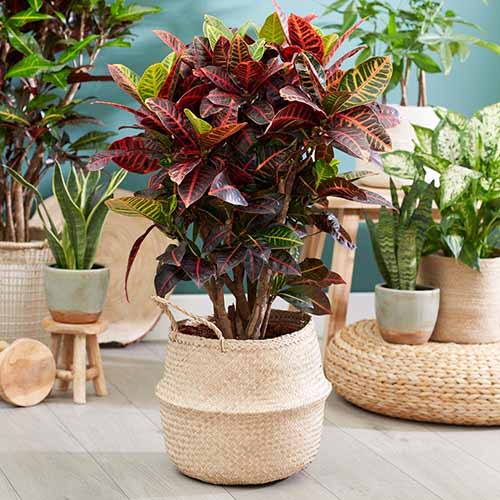
Beautiful! Been growing mine for 20 years!
growing my plant for 3 months, how tall does it get?
Croton grows slowly, but it can reach a max height of 3-8 feet and a spread of 3-6 feet, particularly when grown outdoors in the ground in warm zones. My houseplant started at just a few inches tall when I got it 15 years ago, and it is now about 3 feet tall with a 2-foot spread.
How tall is your plant, and does the leaves fall off fast.
Leaves will fall off when the plant is stressed or if it’s receiving too much or too little water. Sometimes this is a response to repotting. In well-draining soil with moderate, regular watering (not overwatering!) and plenty of sunlight, it should perk up again and start putting out new leaves if you give it some time.
My leaves haven’t fallen off but it’s gone so flat and as soon as I water it it perks right back up lol I thought I killed it and must be 3 ft
Hi Jennifer – I’m sensing some serious croton love here. So glad yours spent a lovely summer outdoors. The transition to the indoor climate is an adjustment that takes time. You may see some wilting and/or leaf drop. Mist the leaves daily to provide extra humidity, and keep the soil moist, but not oversaturated. A little crushed rock in the bottom of a container with drainage holes is a good way to promote drainage. We’d love to see a photo. You may copy and paste one here, in the Forum section of the Gardener’s Path website, or on our Facebook… Read more »
Thank you for the tip about misting, I’ve been searching for care information. Our Kaede (a favorite Japanese name, and a pun on the Latin word for a gory scene [caede] since she loves to show off crimson leaves) has been less than happy of late, and every little bit helps.
Thanks for all the good information. I have a Mamey in a pot that’s about 2 1/2 feet tall. Can this be pruned ? If so, how do I go about it? Thanks.
Hi Marcia
Thank you for your question. Neither a croton nor a mamey sapote tropical fruit tree require pruning. However, to remove a dead leaf or branch, use clean, sharp pruners to cut it off at its point of origin. And to create a more compact shape, choose a place along a branch that is just above a pair of leaves, or a new leaf node, to make your cut. Hard pruning may shock a plant, so prune sparingly.
Will croton do well in a self watering pot?
Hi Barb –
While I have not tried to grow one in a self-watering pot, my answer would be, yes. This type of pot is for plants that should never completely dry out, like croton. Be sure to purchase a good quality container with an efficient wicking system and an overflow outlet for the water reservoir.
Thank you
Hi..just bought one and it seems stressed..I also noticed small bugs and a type of webbing on the plant..is this normal?
These plants will often experience stress after a transplant or change of environment, and this will make them more susceptible to pests and disease. With time and given the proper conditions, it should recover.
What do the small bugs look like?
Make sure yours is planted in a well-draining pot, and don’t overwater. Provide plenty of sunlight. If you think you have mealybugs, clean off the leaves and stems gently with cotton swabs and rubbing alcohol. Yellow sticky fly traps that you stick into your pots with a stake can help if you have flying insects. Good luck!
My sister sent a very nice croton when I was in the hospital. We took it home after I was released. A few days later, maybe a week, I noticed it was dropping leaves like crazy. With all of the things going on after I left the hospital Kerry was ignored. I did some quick research and watered it and sprayed the leaves. I have kept it alive but it’s not growing any new leaves. Southern exposure, indirect light. 10″ pot with seven stalks four of which have leaves. It’s very important I keep this plant alive. My sister bought… Read more »
Thanks for your question, Kenny. This sounds like a wonderful memorial to your friend. Leaf drop in crotons is actually a common problem in response to stress, which can result after a plant is moved or transplanted. Though it may take a few months, given plenty of light in a well-draining pot, as long as you avoid overwatering, it should come back. My own croton, which is about 15 years old now, has experienced leaf drop several times, particularly after moves.
I was just in Belize and picked a couple stems off of a bush that looked alot like a Croton and I’m wondering how to keep it alive? How do I grow roots? Do I just put the stem in dirt? Or am I crazy for even trying? ????
If it is in fact a croton, these can be grown from cuttings. Try dipping the cut ends in a little powdered rooting hormone and plant in well-draining potting soil in a sunny location. Don’t be surprised if the leaves fall off- these plants don’t respond well to stress, but they may still survive and produce new leaves with a little TLC. Good luck!
Just got a croton and it handled its move quite well. Although it does seem to be in very rough soil (with mulch-like material on top, not just regular potting soil) and the water instantly runs thru the pot and out the bottom, although it felt completely dry.
Is my plant getting adequate water? Should I add some regular potting soil?
Thanks for your message, Mic. I’ve been having the same problem lately with my potted Dracaena- the coarse potting soil that I used allows the majority of the water to run right through, and the tips of plant leaves dry out quickly. I would suggest mixing in some regular potting soil and removing some of the coarse/mulch-like mix. However, keep in mind that crotons do not respond well to the stress of repotting- if you can water in a bathtub or sink instead where you won’t need to worry about excess water running out onto your furniture or the floor,… Read more »
I’ve never had a croton but finally bought one and it is growing beautifully and it’s in the middle of my room not even close to a window so that’s where she will stay so nice
Wishing you and your new houseplant all the best! Keep in mind that croton appreciates sunny conditions.
I have had my plant for many years and it has lost all leaves at the bottom about 16 inches. Is there anything I can do to get some leaves growing where it is bare.
Crotons can be very sensitive to changes in their environment, and will often drop leaves when they’re stressed. Larger plants also tend to form more of a tree shape, with less lush branches at the bottom. There’s nothing that I know of that you can do to guarantee new growth on the bare portions, but with regular watering and adequate sunlight, your plant may put out new growth in these areas. Applying a bit of balanced fertilizer can help to encourage new growth as well. Over the decade-plus that I had mine, it lost many of its leaves on more… Read more »